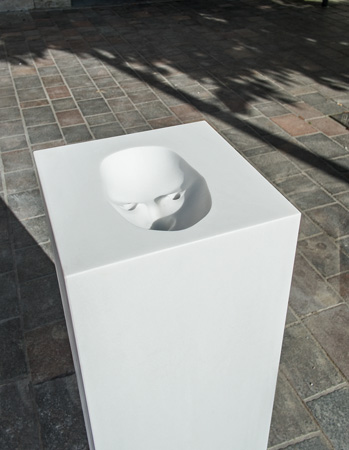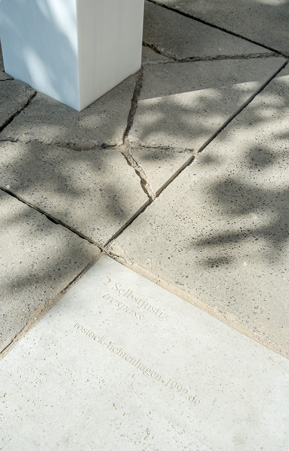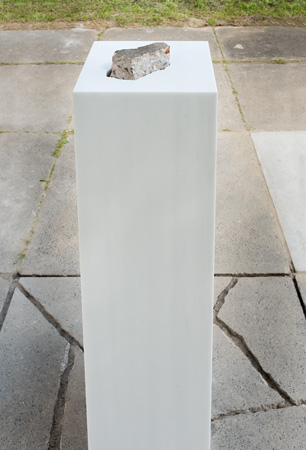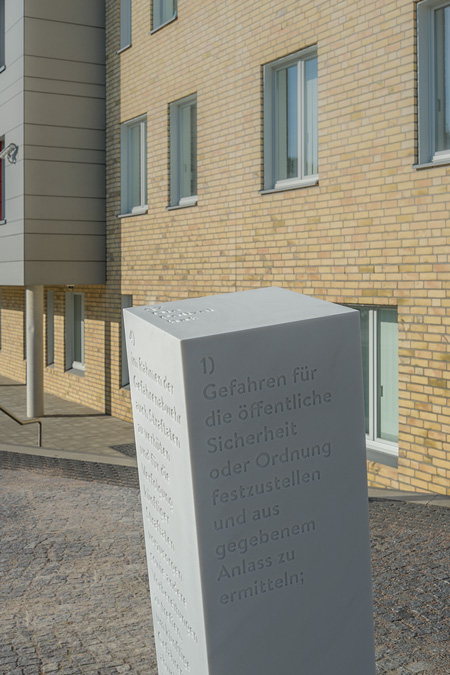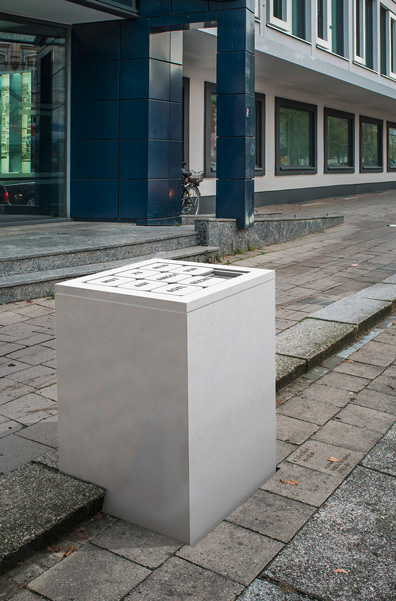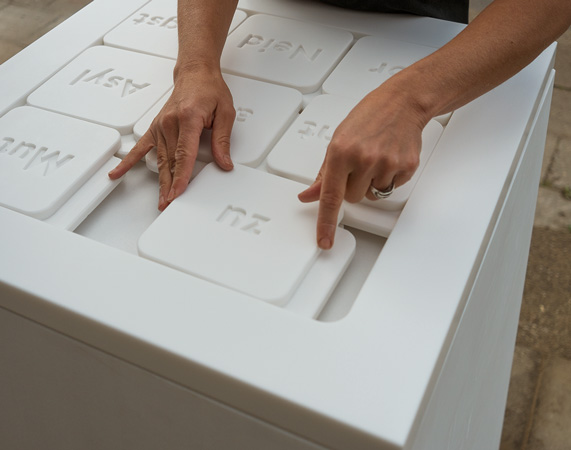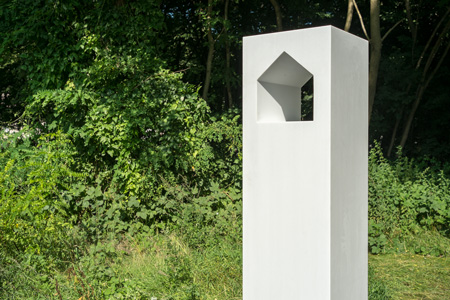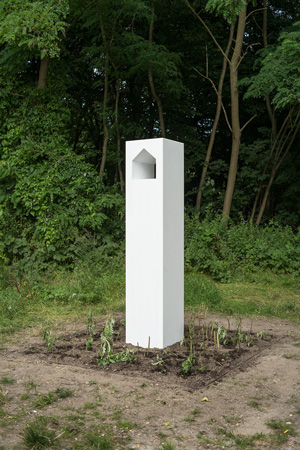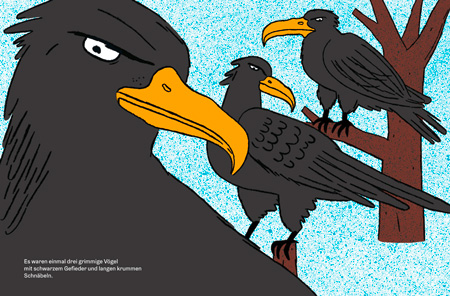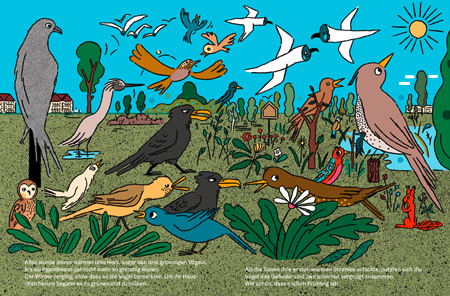Six memorial pieces for the Pogrom
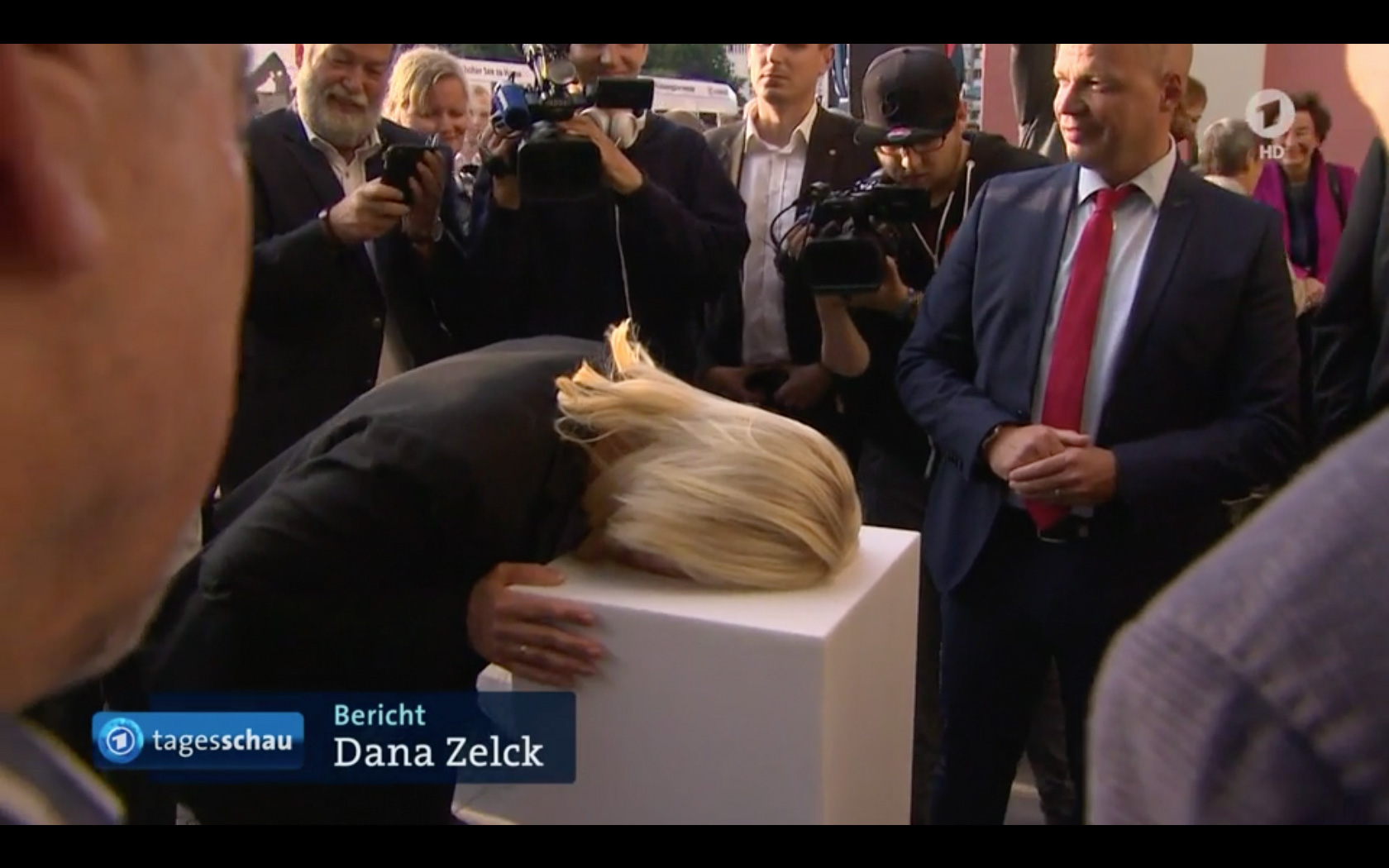
Six memorial pieces
The work Past Present Future by the Artist Collective SCHAUM had been the winning proposal for the »Memory and Memorial of Rostock-Lichtenhagen 1992« art competition commissioned by the City of Rostock in 2016.
The five resulting memorial pieces of the Artist Collective SCHAUM 2017 are an conceptual examination of the Pogrom of Rostock Lichtenhagen.
The sixth sculpture Empathy had been initiated 2018 by the Waldemar Hof society of Rostock and is dedicated to the victims of the events from 1992.
The pogrom
In August 1992 violent xenophobic riots took place in the Lichtenhagen district of Rostock, Germany; these were the worst mob attacks in postwar Germany and were directed against asylum seekers and vietnamese guest workers. At the height of the riots - with about 3,000 neighbourhood onlookers applauding - stones and petrol bombs were thrown, the fire service was obstructed, the police took a passive stand and even withdraw from the scene leaving the victims to their fate. Scene of these attacks was the for its giant façade decoration so called »Sonnenblumenhaus« (house of the sunflowers), which had been the apartment block for vietnamese guest workers and also housed the »Central Reception for Asylum Seekers« (ZAST) in northeast Germany at that time.
The rehabilitation
Since these events the society of the City of Rostock had been looking for the right means for reviewing and revaluating these attacks - being imprinted into public memory and its succeeding political decissions. Regarding this background the Rostock city parliament decided in September 2015 amongst other actions to nationally invite for the art competition »Memory and Memorial for Rostock Lichtenhagen 1992«. For the 25th commemoration of the pogrom the winning concept Past Present Future of the Artist Collective SCHAUM has been commissioned for five specific locations, which showed a direct relation to the riots and their social contextes.
Past Present Future
A shared easily recognisable feature of the six elements of this decentralised artwork is the white cubicle form made from Lasa marble evoking the memory of empty sculpture plinthes. This symbolic »void« references the essential participation of the viewer. Every »cube« is designed respectively in light of its location. The six pieces will not give answers or even assign guilt; furthermore SCHAUM scrutinises the means of everyone's perception and actions: How had we acted, how will we act in future? SCHAUM calls upon our empathy, our humanity, and simultaniously refers to the »pillars of democracy« through the work titles - because only if all democratic forces take effect society works.
Lichtenhagen memory
In addition an archive for scientific research of the historic events has been commissioned. The project »Lichtenhagen memory« has committed itself to the publication of scientific material and educational handouts for schools and higher education.
1 Politics
The work Politics is situated in front of the city hall of Rostock. The top side is engraved with an negative generic face. From the eyes two drill holes run through the stone to either sides and as cannelures consecutelively down the sides and granite floor until the next gully cover. These gesture invites the viewer to mourn, feel humility and bow before the victims - and at the same time questions the credibility of publical and political gestures. With the placement in front of the »Rathaus« (city hall) SCHAUM also recalls the tightening of the asylum rights 1993, for what the escalation of the racist excesses had by then been instrumentalised.
Lasa marble, 32×32×120cm, granite with title and cannelures
2 Trespass
The work Selbstjustiz (trespass) is situated in front of the so called »Sonnenblumenhaus« (house of the sun flowers), the historic location of the pogrom in Rostock-Lichtenhagen. The cube grows out of one of the broken pavement stones which had by then been smashed and abused as brickbats. On the top side a fragment of the pavement is loose half-recessed into the marble. The possibility of removal and utilise the fragment provokes the viewers to reflect their relation to concrete physical as well as abstract structural violence.
The stone fragment has been stolen only three days after the public opening.
Lasa marble, 42×42×120cm, title pavement stone,120×120×12cm; pavement fragment (stolen), ca. 25×12×12cm
3 Executive power
The third cube is placed in front of the police departement Rostock at the crossing of Ulmenstraße/Hansastraße. The marble block is tilted in two ways. All five surfaces bear engraved texts; the top side starts with »Die Polizei hat:« (The Police has:) of §7 of the »Mecklenburg-Vorpommern Public Security and Order Act«. This paragraph formulates the duties of the state police - i.e. »to prevent crime in line with the defence of danger«. Thereby the design of the marble cube broaches the issue of failure in the face of the historic events.
Lasa marble, 42×42×140cm; title pavement stone, 30×30×6cm
4 Media
In front of the media house »Ostsee-Zeitung« - the largest media corporation in the state Mecklenburg-Vorpommern - the cube Media is located. A »Schiebepuzzle« (sliding puzzle) consisting of eight sliding stones with one space to move in is mounted on top of the marble cube. The stones are engraved with news keywords from that time »aslyum«, »right«, »envy«, »courage«, »fear« and three preposition words »to«, »on«, »of«. Thus moved across the board different parts of sentences can be formed and easily inverted in their meaning - referring to the joint responsibility of mass media during the days of the riots and to the general pattern of thoughts related.
Lasa marble, 62×62×100cm; sliding puzzle, cast stone, 62×62×4cm; title pavement stone, 30×30×6cm
5 Society
The fifth cube with the title Society is located near the former place of the Jugend Alternativ Zentrum (JAZ), a left-wing alternative center founded in 1992. After moving to a new location the small unbuild area is now part of a near-by park in the heart of Rostock. The top front of the two meter high figure bears a breakthrough opening in an idealised form of a birdhouse. In allusion to the »house of the sunflowers« the viewer is invited to feed birds (i.e. with sunflower seeds) - but only after their struggle to pass the surrounding flowerbed with stinging nettles and thistles. Thus reminding the viewer of the struggle for moral courage - and as a memory for the activists of the historic JAZ who solely rose up against the racist mob during the riots in Lichtenhagen.
Lasa marble, 42×42×180cm; enclosure with stinging nettles and thistles, 200×200cm; title pavement stone, 30×30×6cm
6 Empathy
The sixth sculpture entitled Empathy shows the imprint of two bodies embracing each other. The artwork, as any other of the sculptures, invites to participate - the observer can take the embracer's place.
Embrace as an universal gesture implicates an invitation to non-violent communication. In this case the sculpture is an apology to the victims and shall appeal for a positive behavior between all human beings.
Lasa marble, 40×38×150cm
The art book for children
An additional element of the decentralised work Past Present Future is an art book for children which has a small package of sunflower seeds attached to it and will be distributed free of charge. For the french historian philosopher Pierre Nora »memorial spaces« are not only concrete places, but also books, pictures or events, at which meaning of society can be crystallised.
Thus the art book Traut euch, kleine Vögel! (Have the guts, little birds!) can be one of those »memorial spaces«. In it the author and illustrator Ulrike Steinke picks up the motif »bird house« and transforms it into a fable setting - all different kind of birds debate why all together can profit from a friendly cohabitation. The work chooses the form and speech of a childrens book - which may also be appealing to adults.
Imprint
Publisher

Artist Collective SCHAUM
kontakt[at]derschaum.de
Editorial

City of Rostock
Amt für Kultur, Denkmalpflege und Museen
kulturamt[at]rostock.de
Credits
title: DPA/Tagesschau; pics: Artist Collective SCHAUM; illustrations: Ulrike Steinke
Design and programming
bureau für typografie & fotografie

